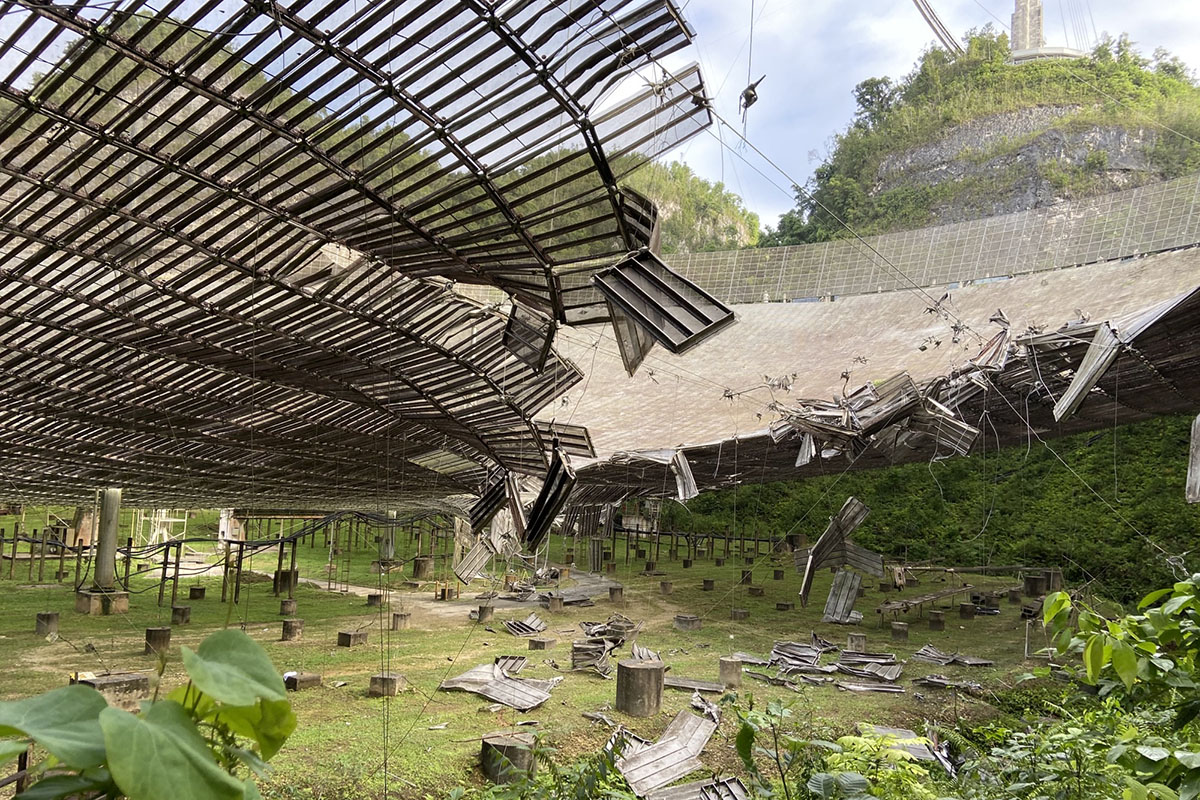Famous alien-hunting telescope slashed to pieces in mysterious midnight accident

The Arecibo Observatory — a gargantuan telescope in Puerto Rico famous for scouring the cosmos for asteroids and alien life — went quiet this week, following a devastating accident that left the telescope's reflector dish in pieces.
On Monday (Aug. 10) at approximately 2:45 a.m. local time, a metal cable at the facility snapped, slashing through the radar dish and tearing open a 100-foot-long (30 meters) hole, according to a statement from the University of Central Florida, which operates the National Science Foundation-owned facility. The snapped cable also smashed through several other cables and platforms that support the dish, causing debris to rain down on the ground below and making it harder for technicians to access the site.
"We have a team of experts assessing the situation," Francisco Cordova, the director of the observatory, said in the statement. "Our focus is assuring the safety of our staff, protecting the facilities and equipment, and restoring the facility to full operations as soon as possible, so it can continue to assist scientists around the world."
Related: 9 strange, scientific excuses for why humans haven't found aliens yet
Arecibo began operating in 1963 from the bottom of a natural sinkhole in Puerto Rico. At the time of its completion, Arecibo was the world's largest single-dish telescope, stretching 1,000 feet (305 m) in diameter. While you may not know the telescope by name, you might know it by sight, thanks to the 1997 movie "Contact." That film's protagonist is an astronomer working at Arecibo, who hopes to make first contact with extraterrestrial intelligence. (The observatory's gargantuan reflector dish also stole the show at the end of the 1995 James Bond flick, "GoldenEye.")
Though we're still waiting for that epic first DM from aliens, Arecibo has played a central role in the search for extraterrestrial intelligence (SETI) since the 1970s. In 1974, astronomers used the radio telescope to transmit a binary code toward a dense cluster of stars 25,000 light-years away, hoping the message might get picked up by another technologically-advanced civilization. (It wasn't).
SETI experiments have remained a key part of the observatory's agenda — and so has planetary defense. Arecibo's Planetary Radar Project, part of NASA's Planetary Defense program, is responsible for detecting and studying near-Earth objects, such as asteroids, that could pose a threat to our planet.
Sign up for the Live Science daily newsletter now
Get the world’s most fascinating discoveries delivered straight to your inbox.
That project, along with all other Arecibo projects, has been suspended due to the damage. But Arecibo has bounced back from damage before, including the fallout from earthquakes and Hurricane Maria, and this accident will hopefully be no exception. Still … it would be a lousy time for the aliens to finally return our call.
Originally published on Live Science.

Brandon is the space/physics editor at Live Science. His writing has appeared in The Washington Post, Reader's Digest, CBS.com, the Richard Dawkins Foundation website and other outlets. He holds a bachelor's degree in creative writing from the University of Arizona, with minors in journalism and media arts. He enjoys writing most about space, geoscience and the mysteries of the universe.










